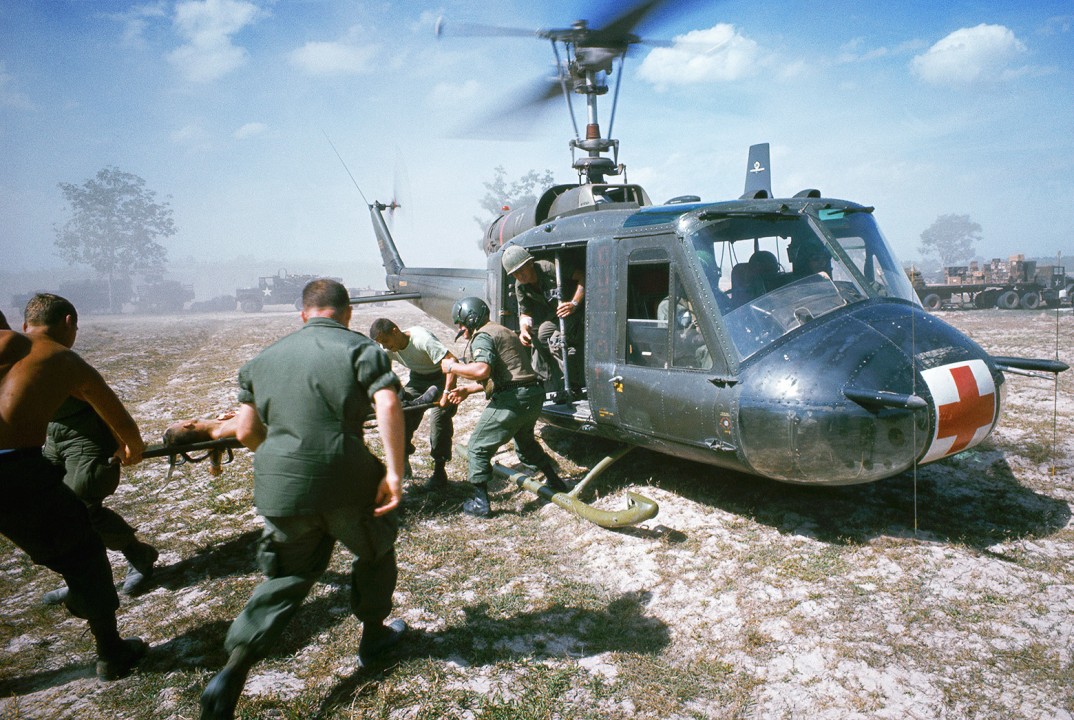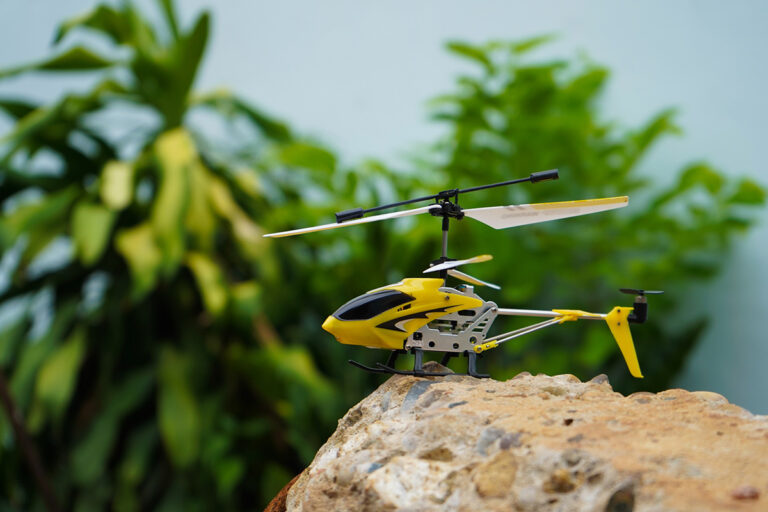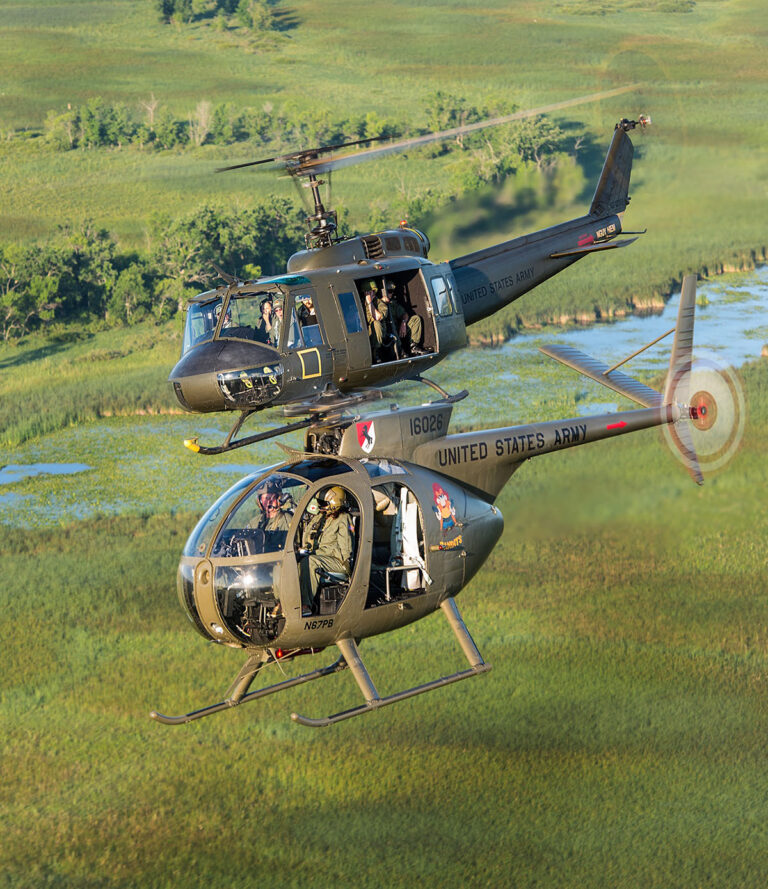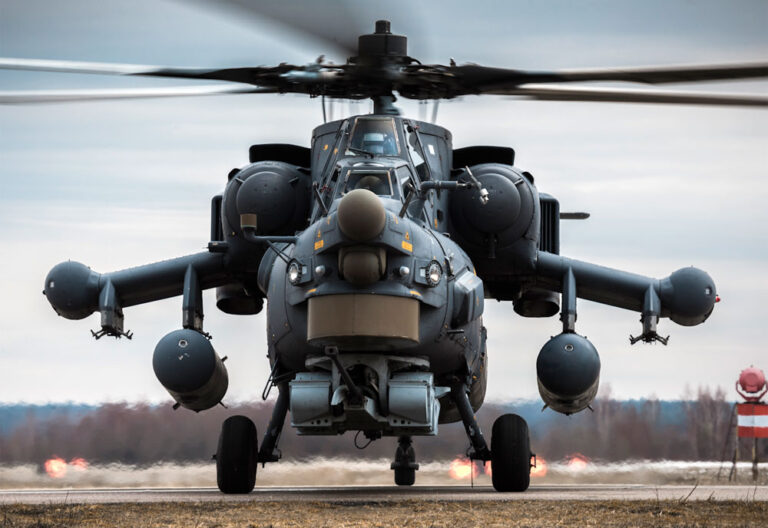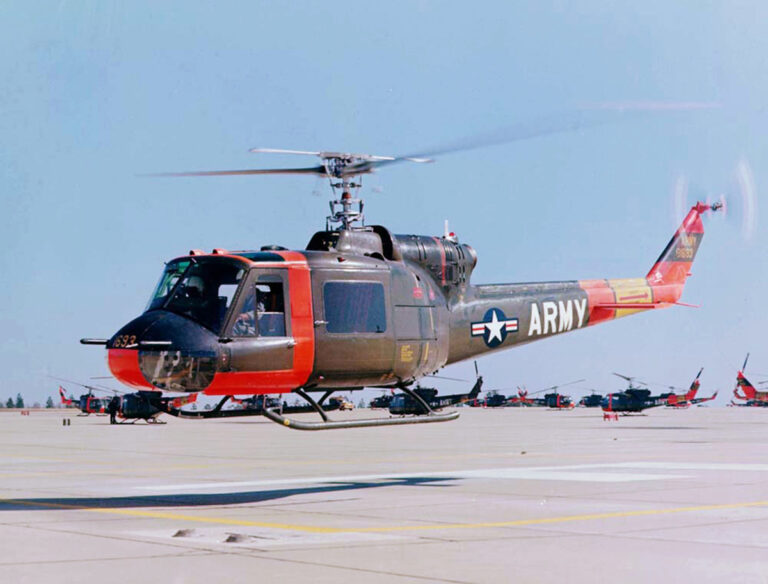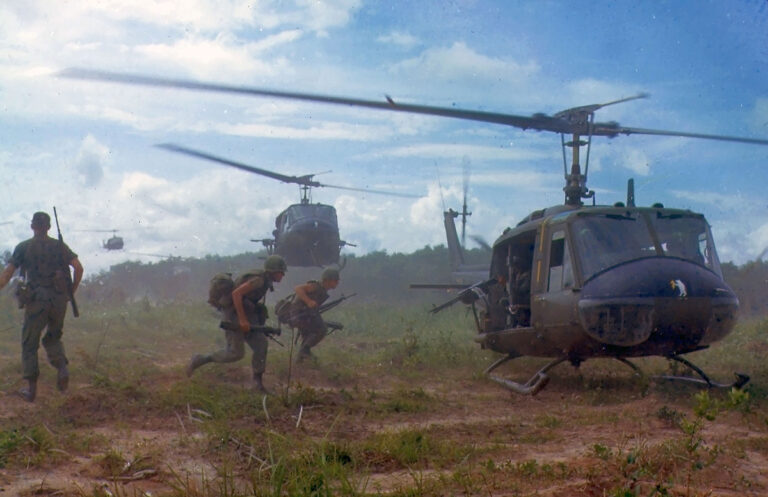Helicopter Dustoffs in Vietnam
Helicopter dustoffs in Vietnam played a transformative role in medical evacuation during the war. In 1969 alone, Huey ‘dustoffs’ accomplished 29,114 medical evacuations. Remarkably, the name “Dustoff” is not just a generic term; it originates from the first medevac unit in Vietnam. Such units quickly became the most admired Huey crews during the entire war. Their sheer dedication and heroism reshaped the landscape of wartime medical care.
Medevac helicopters revolutionized how wounded soldiers were treated in battle. Consider this: 29% of all wounded US Soldiers succumbed to their injuries during World War II. This heartbreaking statistic saw improvement during the Korean War, dropping to 26%, thanks to advances in medical technology and the introduction of medevac helicopters like the Bell 47. By the time the Vietnam War rolled around, this number was further reduced to 19%. To grasp the magnitude of this progress, consider that medevac helicopters in Vietnam transported a staggering 400,000 wounded soldiers, in sharp contrast to the 17,700 during the Korean War.
The Price of Exit: A True Story of Helicopter Pilots in Vietnam
For assault helicopter crews flying in and around the NVA-infested DMZ, the U.S. pullout from Vietnam in 1970-71 was a desperate time of selfless courage. Now former army warrant officer Tom Marshall of the Phoenix, C Company, 158th Aviation Battalion, 101st Airborne, captures the deadly mountain terrain, the long hours flown under enormous stress, the grim determination of hardened pilots combat-assaulting through walls of antiaircraft fire, the pickups amid exploding mortar shells and hails of AK fire, the nerve-racking string extractions of SOG teams from North Vietnam.
Yet, these numbers don’t just tell a story of medical advancement—they tell tales of unparalleled bravery. Emergency dustoff missions were perilous. Most missions were executed when a unit was under enemy fire, making the landing zones extremely ‘hot’ and risky. But the Dustoff crews were undeterred. Their commitment to their fellow soldiers was unwavering, underscoring the essence of their motto, “When I have your wounded.” Their missions not only saved countless lives but also showcased exemplary bravery, dedication, and innovation.
What did Dustoff mean in Vietnam?
“Dustoff” – an acronym for “Dedicated Unhesitating Service to Our Fighting Forces” – epitomized the spirit of medical evacuation (medevac) missions in Vietnam. These operations provided rapid medical aid, even in the thick of battle, ensuring wounded soldiers got timely medical attention.
What is a helicopter Dustoff?
A helicopter dustoff refers to medevac missions using helicopters to swiftly evacuate wounded soldiers from combat zones. These missions were critical in Vietnam, with dense terrains and rapidly changing battlefronts. The primary helicopter used was the UH-1 Huey, which could land in a variety of challenging terrains.
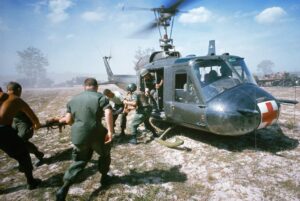
What was a Dustoff Pilot in Vietnam?
A Dustoff Pilot in Vietnam was a brave individual who undertook perilous missions to evacuate injured soldiers, often amidst enemy fire. Their primary focus wasn’t combat but lifesaving. These pilots were heroes, not just for their flying skills, but for their heart, determination, and unwavering commitment to their fellow soldiers.
What were the Dustoff units in Vietnam?
The Dustoff units in Vietnam consisted of specialized medevac crews: pilots, co-pilots, medics, and crew chiefs. They operated under the Army Medical Service. By the end of the Vietnam War, there were over 20 dustoff units in operation, each with its designated call sign and operational area.
Below is a list of major medevac units that served in Vietnam:
- 45th Medical Company (Air Ambulance): Predominantly based in Long Binh but also operated from other locations including Tay Ninh and Nha Trang.
- 54th Medical Detachment (Helicopter Ambulance): Stationed in several areas during the war, including Pleiku.
- 57th Medical Detachment (Helicopter Ambulance): Operated out of Goddard Field, Nha Trang Air Base.
- 82nd Medical Detachment (Helicopter Ambulance): Known to have operated in the Qui Nhơn region.
- 159th Medical Detachment (Helicopter Ambulance): Stationed at locations such as Camp Evans and Phu Bai.
- 237th Medical Detachment (Helicopter Ambulance): Operated primarily from Camp Holloway, Pleiku.
- 283rd Medical Detachment (Helicopter Ambulance): Primarily stationed in Bien Hoa.
- 326th Medical Battalion (Airborne): This was part of the 101st Airborne Division, which had operations in numerous locations including Phu Bai, Camp Eagle, and Firebase Ripcord.
- 498th Medical Company (Air Ambulance): Known to operate in multiple regions, including Nha Trang and Lane Army Heliport in An Son, near Qui Nhơn.
- 499th Medical Company (Air Ambulance): Primarily stationed in Bien Hoa.
It’s important to note that due to the mobile nature of the conflict and the demands placed upon medevac units, many of these detachments and companies were deployed to various hotspots as needed, even if they had a primary base of operations.
Where did the term “Dustoff” come from?
The term “Dustoff” originated from the radio call sign used by Major Lloyd Spencer’s medevac unit in 1963. It quickly became synonymous with medevac missions because of its memorable and descriptive nature – helicopters would often kick up dust when landing in Vietnam’s dry terrains.
What is the Army DUSTOFF motto?
The Army DUSTOFF motto, inspired by their dedication and valor, is “When I have your wounded.” It underscores the commitment of the Dustoff crews: once they are called, they will ensure the wounded are evacuated, regardless of the risks involved.
When was the first official medevac with a Helicopter?
The first official medevac using a helicopter took place during the Korean War in 1950. This proved to be a turning point in military medical evacuations. The success in Korea set the stage for expanded use in Vietnam, where the concept of helicopter dustoffs was refined and extensively utilized.
“Dustoff” Statistics during the Vietnam War:
- Mission Count: The Dustoff helicopters in Vietnam flew hundreds of thousands of missions, with some estimates putting the number at around 500,000 during the war.
- Casualty Evacuations: It is estimated that Dustoff helicopters evacuated around 900,000 casualties, both military and civilian, over the course of the Vietnam War.
- Response Time: Medevac units in Vietnam had an average response time of around 35 minutes from the moment they received a call to when they were airlifting the wounded, even under combat conditions.
- Casualty Survival Rate: The survival rate for wounded soldiers evacuated by helicopter in Vietnam was significantly higher than in previous conflicts. Roughly 98% of the wounded who were evacuated by Dustoff units survived their injuries, thanks in large part to the speed with which they were able to receive medical attention.
- Helicopter Losses: Dustoff missions were dangerous, often requiring pilots and crews to fly into active combat zones. It’s estimated that around 200 medevac helicopters were lost in Vietnam, with many crew members killed or injured.
- Dustoff Crew Casualties: It’s estimated that over 250 Dustoff crew members were killed in action during the Vietnam War, with many more wounded.
- Legacy: The bravery and efficiency of the Dustoff units in Vietnam led to the continuation and expansion of aeromedical evacuation techniques in subsequent conflicts and military operations.
Helicopters Used in Medevac Roles in Vietnam
Bell UH-1 Iroquois (“Huey”)
- Description: The iconic “Huey” is perhaps the most recognizable helicopter from the Vietnam era. It was versatile, reliable, and was used for various missions, including medevac. For medevac roles, the Huey Helicopter was typically outfitted with stretchers along the cabin’s sides and space in the middle for medical attendants.
- Significance: Due to its ubiquity and importance, the UH-1 became synonymous with Dustoff missions. Its distinctive “whop-whop” sound was a beacon of hope for wounded soldiers, signaling imminent rescue.
Bell H-13 Sioux
- Description: An earlier model and smaller than the Huey, the H-13 was a light helicopter initially adopted for medevac purposes during the Korean War. In Vietnam, it was used in the early stages before being mostly replaced by the more capable UH-1. It could typically carry two stretchers mounted externally.
- Significance: The Sioux is famous as the helicopter depicted in the TV series “MAS*H.” Its use in Vietnam was limited due to its smaller size and lesser capabilities compared to the Huey.
Sikorsky CH-37 Mojave
- Description: A much larger helicopter than the Huey, the CH-37 was not primarily a medevac helicopter. However, in instances where mass casualties occurred or when larger equipment needed moving, the Mojave’s heavy-lifting capability made it suitable.
- Significance: Its primary use was for cargo and transport, but its versatility meant it could be pressed into medevac service when needed.
Bell OH-58 Kiowa
- Description: Introduced later during the Vietnam War, the OH-58 was a light observation helicopter. While its primary role was not medevac, it was occasionally used to evacuate wounded, especially from tight or otherwise inaccessible locations where larger helicopters couldn’t land.
- Significance: The Kiowa showcased the versatility of helicopters in Vietnam. Even those not primarily designed for medevac could, in a pinch, be used to save lives.
In summary, while several helicopters were used in medevac roles during the Vietnam War, the Huey stands out due to its wide deployment and the sheer number of lives it helped save. The adaptability of various helicopter models for medical evacuation demonstrated the importance of rotary-wing aircraft in modern warfare’s medical response.
The Price of Exit: A True Story of Helicopter Pilots in Vietnam
For assault helicopter crews flying in and around the NVA-infested DMZ, the U.S. pullout from Vietnam in 1970-71 was a desperate time of selfless courage. Now former army warrant officer Tom Marshall of the Phoenix, C Company, 158th Aviation Battalion, 101st Airborne, captures the deadly mountain terrain, the long hours flown under enormous stress, the grim determination of hardened pilots combat-assaulting through walls of antiaircraft fire, the pickups amid exploding mortar shells and hails of AK fire, the nerve-racking string extractions of SOG teams from North Vietnam.
Conclusion
The Vietnam War, fraught with its complexities and challenges, nonetheless brought about pivotal changes in military medical evacuation, forever altering the battlefield’s landscape. The introduction and prevalent use of helicopters, most notably the UH-1 “Huey”, transformed the fate of countless wounded soldiers, bringing them from the brink of peril to the safety of medical care in record time.
The “Dustoff” missions, as they came to be called, were emblematic of unwavering courage. With over 900,000 casualties evacuated and a survival rate that touched a remarkable 98%, the success of these medevac operations was undeniable. Behind these statistics were the brave souls of the medevac units: the 45th Medical Company, the 54th Medical Detachment, and others who, day and night, flew into harm’s way to uphold their motto, “When I have your wounded.”
Helicopters like the H-13 Sioux and OH-58 Kiowa also played their parts, underscoring the evolving nature of warfare and the adaptability of the armed forces. But the Huey stood apart, its iconic silhouette and distinctive sound becoming symbols of hope amidst the chaos of war. However, beyond the machinery and tactics, the Vietnam medevac story is fundamentally human. It speaks to an unwavering commitment to leave no soldier behind, a testament to human resilience and innovation even in war’s direst circumstances. The legacy of the Dustoff units and their helicopters endures, a reminder that amidst the shadows of conflict, there always emerges a beacon of hope, heroism, and humanity.
This is a Dustoff Video Tribute by bolt809


